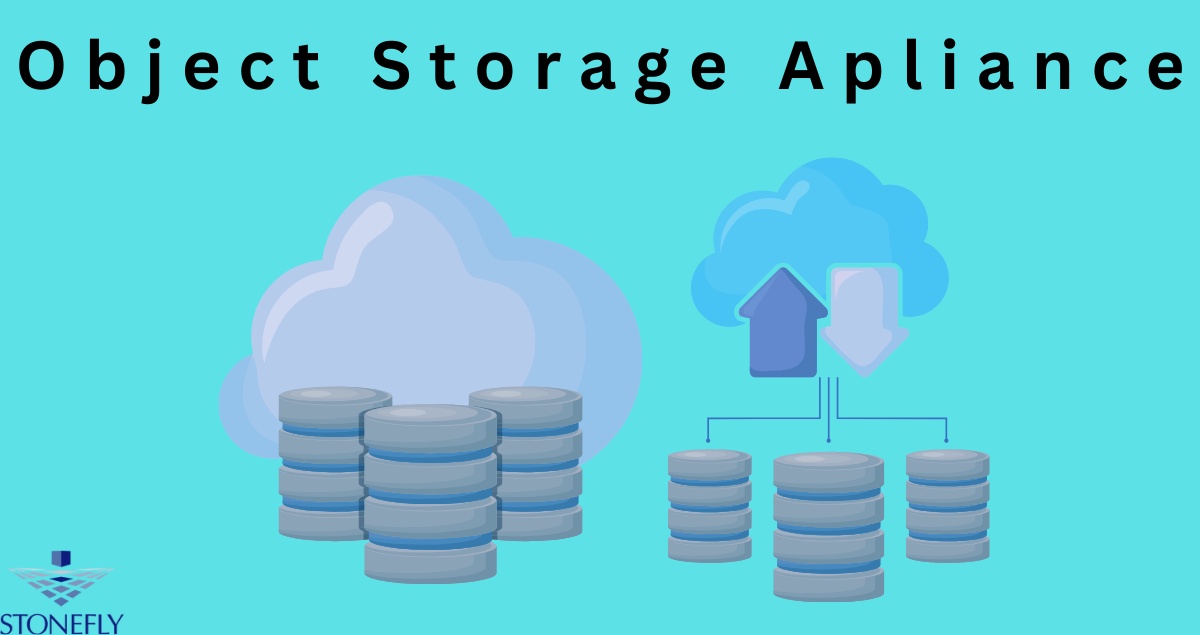Object Storage Appliances: Revolutionizing Data Management
In an age where data is not only a precious commodity but also the lifeblood of numerous industries, the right data storage solution plays a pivotal role in the success of IT operations. Among the myriad of available storage systems, object storage appliances have emerged as a robust, scalable, and efficient way to manage the burgeoning data volumes of today's enterprises.
As an IT professional, data center manager, or cloud architect, you are likely well-aware of the constant battle to balance the expanding needs for data storage with the constraints of budgets and infrastructure limitations. This guide aims to demonstrate how Object Storage Appliances offer a unique solution to modern data management challenges.
Understanding Object Storage Appliances
Object storage is a data storage architecture that manages data as objects, unlike file storage, which is structured into files and a traditional block storage, which structures data into blocks. Object storage can be significant for many businesses, from small start-ups to large enterprises, looking to store data without worrying about a file hierarchy. This is especially true in situations where scale is vast. Object storage platforms offer a flat namespace and are distributed across many geographically dispersed data centers. They work more efficiently for large-volume use cases, such as for serving images, videos, backup files, and log files.
Object storage appliances come with their own set of unique features and benefits that have made them increasingly attractive to businesses:
Key Features of Object Storage Appliances
Object storage systems often represent files as objects stored alongside their metadata and other metadata sets. They're accessed through various mechanisms, such as Representational State Transfer (REST) endpoints. These systems tend to be incredibly scalable, offering the ability to store petabytes and even exabytes of data.
Scalability
One of the key features of object storage is its horizontal scalability, allowing for seamless expansion across multiple storage devices and locations. Traditional file systems and block storage scales up, while object storage scales out to accommodate user-defined amounts of data to be stored and retrieved.
Versatility
Object storage can handle all types of unstructured data, from multimedia files to large datasets, making it a versatile solution for organizations with diverse data types. It simplifies data management by eliminating the need for a complex file system and allows for the easy retrieval and manipulation of data objects without regard to their location or format.
Benefits Over Traditional Storage Solutions
Object storage appliances deliver several advantages over traditional storage solutions — file and block storage — which make them particularly critical for businesses looking to optimize their data storage efforts:
Cost-Efficiency
Due to the highly redundant nature of object storage and the use of commodity hardware, the costs associated with object storage solutions, especially at scale, are often lower compared to traditional storage systems.
Ease of Maintenance
With object storage, the process of adding and managing storage is much more straightforward. Systems can automatically handle the distribution of data across various storage nodes, reducing the need for manual intervention.
Resiliency and Geographic Dispersal
Object storage platforms are well-suited to ensure high data availability and integrity and can withstand multiple hardware failures. They are designed to distribute data across multiple data centers, often in different geographical locations to support disaster recovery strategies.
Use Cases in Various Industries
The adoption of object storage appliances is proliferating across different domains and here are a few use cases that highlight the value of object storage appliances in these industries:
Healthcare
Hospitals and healthcare organizations need storage solutions that can handle vast amounts of medical imaging data, patient records, and other unstructured data. Object storage's ability to store, manage, and scale makes it an ideal solution for the healthcare industry's data management needs.
Finance
Object storage delivers on the regulatory and compliance requirements of the finance industry, which needs to store and archive transactional data securely for long periods. Its data resilience features ensure that no data is lost or compromised, even after decades of archiving.
Media and Entertainment
In the media sector, there is a constant need for large-scale storage for media assets like video footage, music files, and high-resolution images. Object storage solutions excel in their ability to archive and distribute this large and growing repository of unstructured data.
Key Considerations for IT Professionals
When deciding whether to implement an object storage solution, IT professionals need to consider various factors to ensure they are making the right choice for their organization:
Scalability
In a world where data volumes are skyrocketing, the ability to scale storage resources quickly and non-disruptively is paramount. Object storage's ease of scalability allows IT departments to grow their storage capacity without interrupting service.
Security
Beyond basic protection, object storage solutions should offer robust security features such as encryption, data loss prevention, and access controls. Additionally, built-in features to support compliance with data protection laws are crucial for industries that handle sensitive data, such as healthcare and finance.
Integration with Cloud Services
Many modern businesses require a storage solution that seamlessly integrates with public and private cloud environments. Object storage, often with its roots in cloud-native design principles, is well-positioned to facilitate hybrid cloud and multi-cloud storage strategies, ensuring data access and mobility.
Comparison with Other Storage Solutions
Understanding the differences between object storage and other storage solutions is key to making an informed decision. Here are some important distinctions to consider:
Block Storage
Block storage is designed for use with applications, where data files are stored in multiple, specialized data blocks. This makes it generally faster and more efficient for structured data but less suitable for the unstructured data types handled by object storage.
File Storage
File systems are familiar to most users and can be accessed through types of networked storage devices. While they have a clear directory structure, they are not as efficient or scalable for unstructured data as object storage systems.
Future Trends and Innovations
The evolution of data storage technology is relentless, and object storage is expected to continue to evolve. Future trends such as the increasing use of artificial intelligence (AI) and machine learning (ML) to analyze and manage data within object storage environments will unlock further value for businesses.
Predictions for the Evolution of Object Storage Appliances
One of the main focus points for future object storage appliances will be the enhancement of metadata operations, fostering better searchability and analytics. We can also anticipate continued improvements in performance, with object storage systems becoming more adept at handling a wider range of workloads, including those that require low-latency access to data.
Conclusion
Object storage appliances represent a significant leap forward in data storage capabilities. As enterprises grapple with the exponential growth of their data, the scalability, versatility, and cost efficiencies offered by object storage make it an increasingly vital component of the IT infrastructure. The adoption of object storage is more than just a technological evolution; it is a strategic step that can optimize the way organizations manage their most valuable asset — data.
For IT professionals, the task is now to evaluate the specific needs of their organization and to consider whether object storage could provide the optimal solution. With the growing relevance and proven benefits of object storage appliances, the decision to adopt this technology is one that could have a lasting and positive impact on data management and operational efficiency.
FAQs
What is the main advantage of object storage compared to other storage solutions?
Object storage's main advantage is its ability to manage and scale large volumes of unstructured data efficiently, making it well-suited for modern data management needs.
Can object storage be integrated with cloud services?
Yes, many object storage solutions are designed with cloud-native principles in mind and can seamlessly integrate with public and private cloud environments.
What are some future trends for object storage appliances?
Future trends include enhanced metadata operations, improved performance capabilities, and increased support for AI and ML technologies. Overall, the evolution of object storage will continue to drive innovation in data storage and management.
How can organizations benefit from adopting object storage?
Organizations that adopt object storage can benefit from increased scalability, versatility, and cost efficiencies in managing their growing volume of unstructured data. This can lead to improved operational efficiency and better utilization of resources.


No comments yet